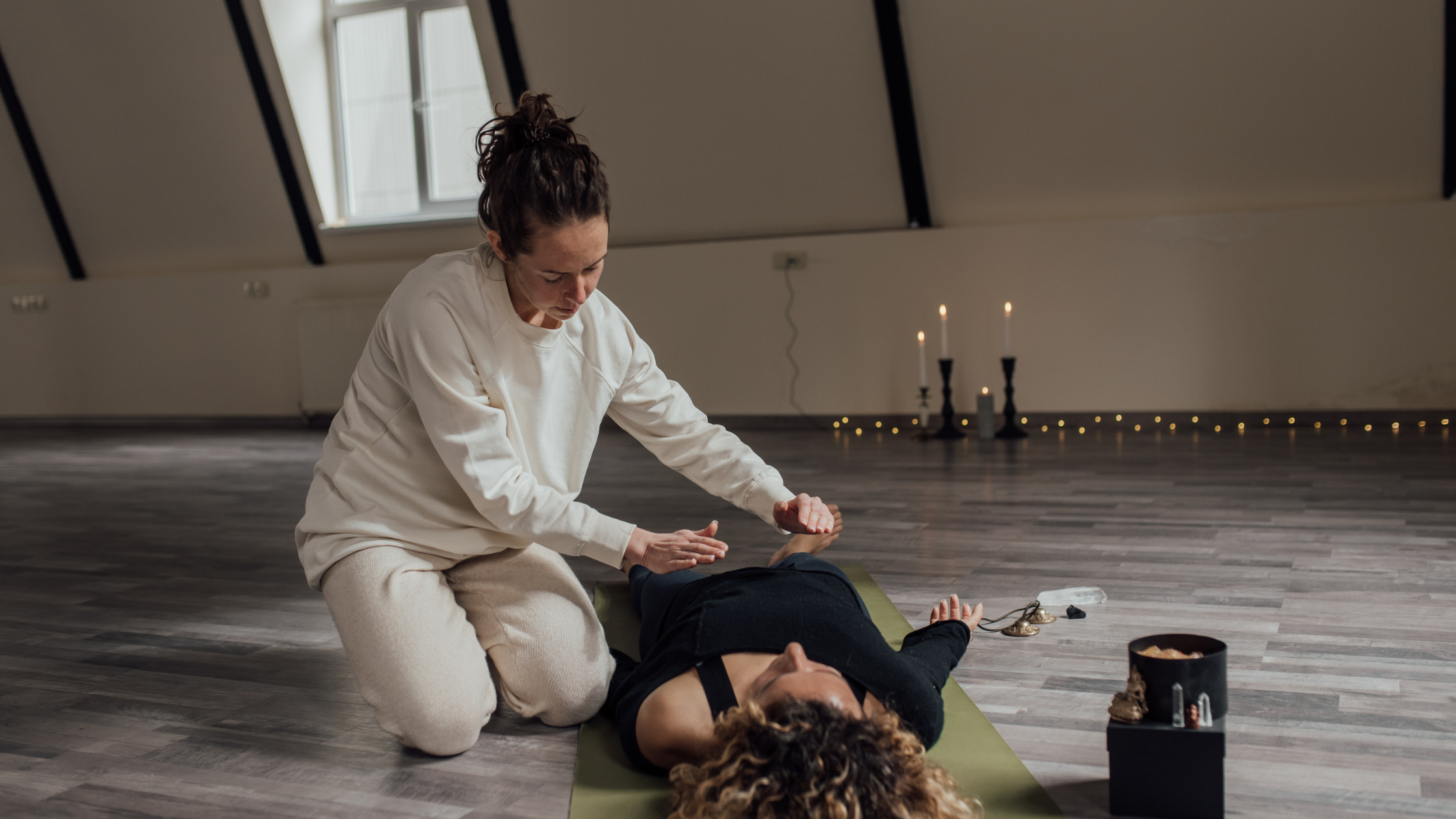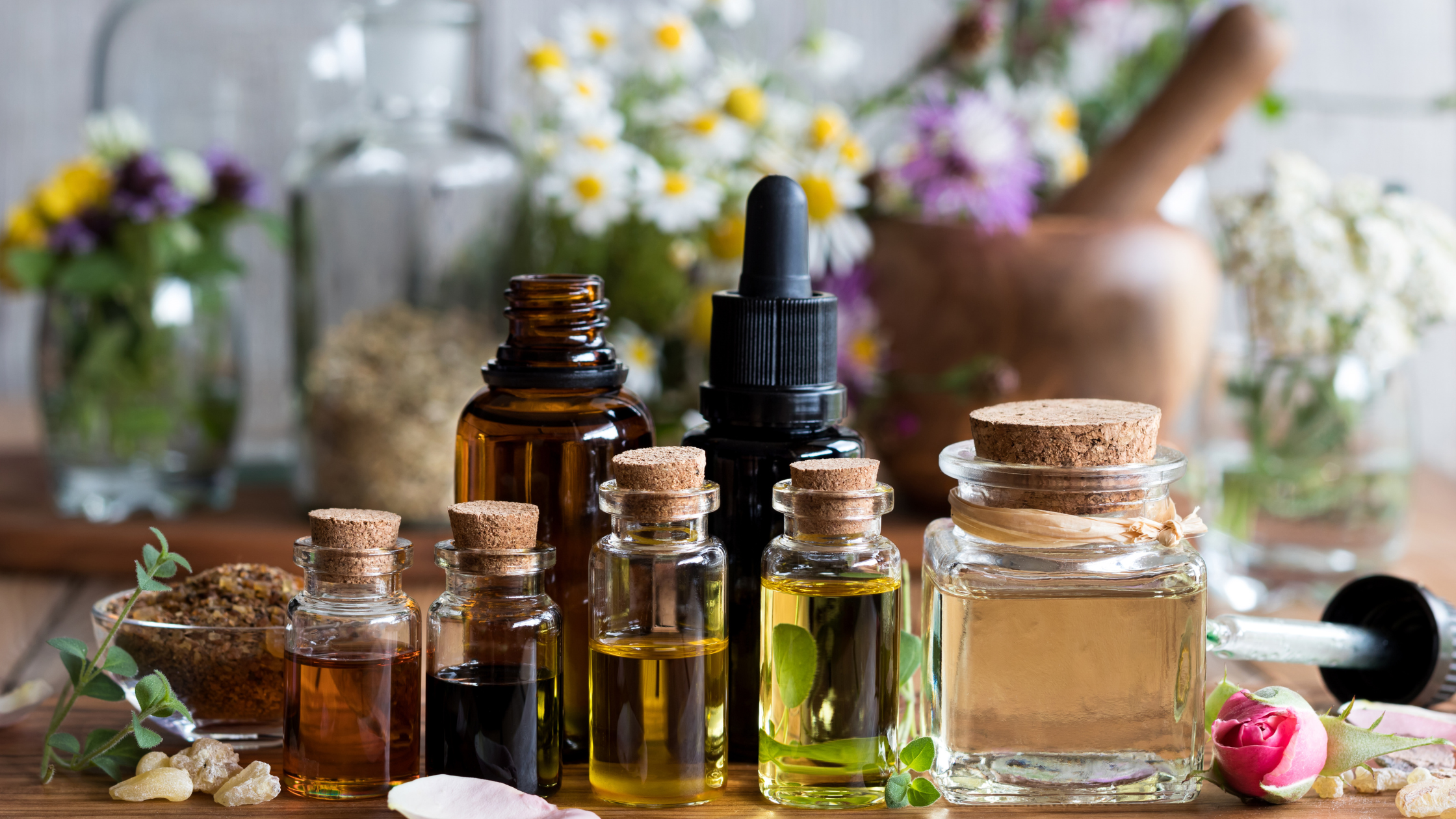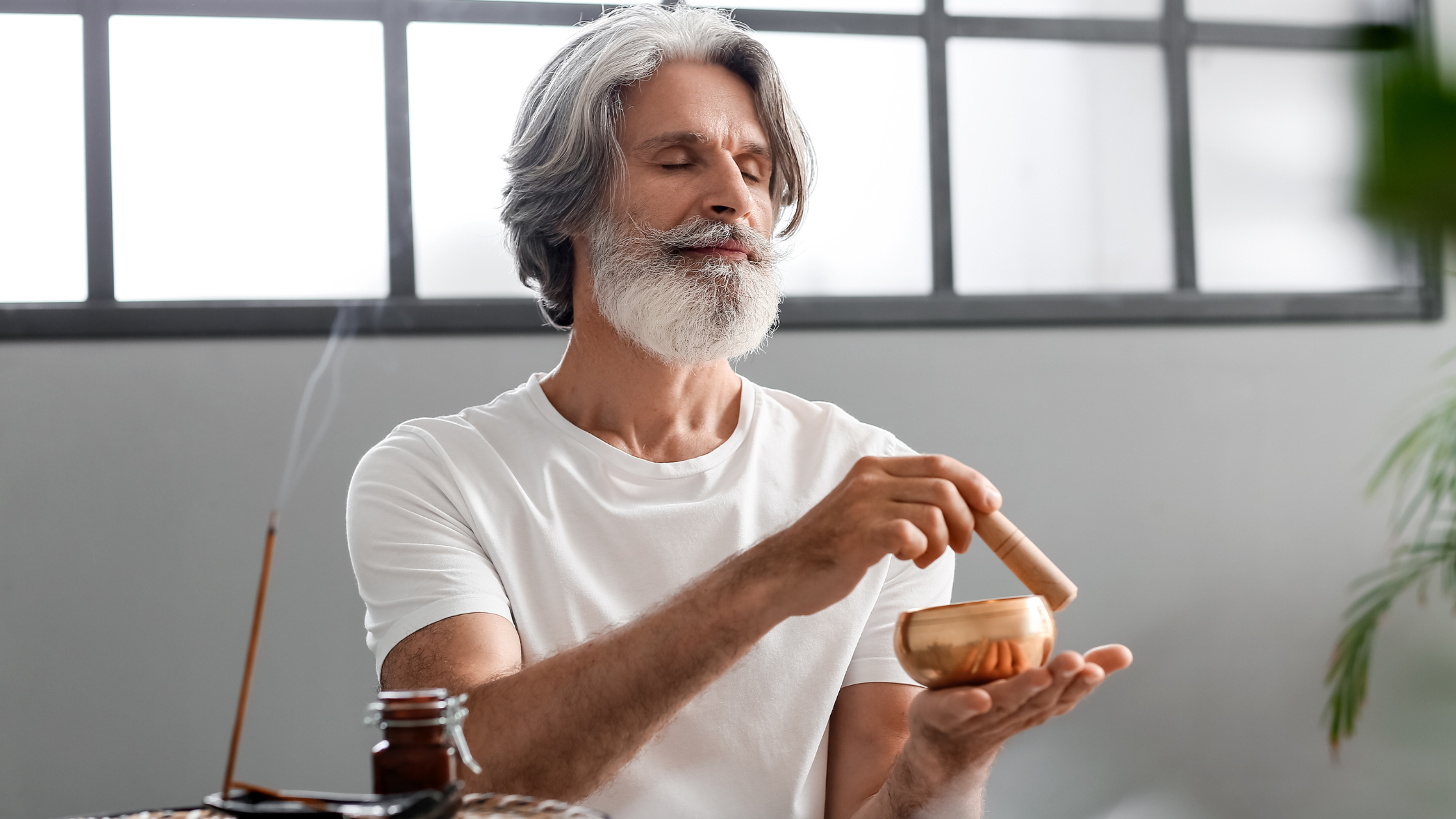4 Keys to Help You Bring Energy and Holistic Care to the Medical System
June 13th, 2025
10 min read

Many of us dream of a day when the energy and holistic methods we see benefitting people so profoundly finally find acceptance within the mainstream healthcare system.
A time when a surgical procedure includes the option of energy work or acupuncture for pain management. When it’s standard of care for calming holistic treatments to be offered in the chemotherapy infusion room. When medical providers and holistic practitioners sit together to consider approaches for a patient’s total wellbeing.
When care is truly integrative.
While still not the full reality, we’ve come a long way in the past 20 years, with a growing body of research substantiating the many ways we know this work can help. And with an impressive 8-fold increase in the number of leading health systems and academic medical centers actively promoting integrative care since 1999, and more programs joining each year.
The range of practices making their way to the mainstream is broad, including Reiki, Healing Touch, sound healing, aromatherapy, yoga, acupuncture, Emotional Freedom Technique (EFT or tapping), laughter, guided imagery, and more.
While this knowledge is empowering for our field, you may be wondering how you can get involved. How can you be a part of the movement that gets energy and holistic work more deeply integrated within a medical setting?
We are here to share four keys to help you take practical steps toward bringing your work into healthcare settings. You’ll hear advice from practitioners who’ve successfully done it, and gain insights that can guide your own journey.
-Jun-11-2025-08-45-14-3691-PM.png?width=301&height=375&name=HubSpot%20Banners%20for%20EMPA%20(2)-Jun-11-2025-08-45-14-3691-PM.png) People Want Integrative Care; Practitioners Like You Are Responding
People Want Integrative Care; Practitioners Like You Are Responding
The public wants holistic options, and their demands are being heard.
The convergence of research and public desire has helped in the adoption of programs like the Whole Health approach at the Veterans Affairs Administration (VA), a government-supported institution that touches almost every family in the country.
Medical professional bodies like the American Nurses’ Credentialing Center are also taking interest, considering the availability of integrative approaches as they award their coveted Magnet hospital designation.
Essential to the design and delivery of this care, and to the realization of this bigger dream, is the vision, love, and persistence of energy and holistic practitioners like you. Professionals who hold the dream, and who do the work to make it real.
What follows below is a synthesis of the practical wisdom generously shared by several amazing practitioners with deep experience winning acceptance for, launching, and expanding energy healing programs in mainstream healthcare institutions.
They hope that these tips will ease the path of those of you just starting, or hitting a plateau in your efforts. Including licensed and non-licensed professionals, in volunteer and paid positions, our guides helped bring holistic modalities to a family clinic, a small and a large hospital system, and individual VA facilities.
Thank you to them and all who are pioneering this journey!
-Jun-11-2025-08-32-27-9610-PM.png?width=245&height=264&name=HubSpot%20Banners%20for%20EMPA%20(1)-Jun-11-2025-08-32-27-9610-PM.png) How to Begin Bringing Energy Work Into Medical Settings
How to Begin Bringing Energy Work Into Medical Settings
Sometimes, the first step seems the hardest. How to make connections? Where to begin?
Start by studying the institution, and consider all the departments that might be open to energy methods.
Spiritual care, which can also be known as Chaplaincy or Pastoral Care, can be a natural fit in that they are everywhere in the hospital, and interact with both patients and the nursing staff.
Palliative or long-term care, post-surgery, women’s health, or family practice clinics are other possible areas. Be open, and look for opportunities.
Another suggestion is to start by volunteering; “pay your dues” by doing whatever’s needed with excellence and a smile. The volunteer director might then be receptive to your ideas for other ways you can help.
This is how one of our guides got permission to offer energy work to patients in the oncology infusion room. Sharing that it could “help keep them calm,” patients happily agreed to receive it. The nurses were happy, too, as calm patients made their work easier.
Generating awareness by promoting classes in your modality to local nurses and healthcare workers, and offering scholarships or CE credits, can help open a path. Grants to help you do this may be available through your modality’s organization, or a professional association.
An event like Nurses’ Week is a great occasion to connect with local holistic nurses and offer sessions or gifts like aromatherapy inhalers to spark interest. An experience is worth a thousand words when it comes to conveying the benefit of a method.
“The nurses get it. And they love it,” says one of our guides, “just get them on the table and they’re sold.”
Some healthcare systems, including the VA, have integrative care teams at individual centers whom you might approach. Look for requests for proposals (RFPs) from centers like this seeking classes or other programs.
Nurse participants in a series of self-care classes I taught under a hospital-funded program not only used the energy balancing, breathing and other techniques for themselves, but with their patients, and their doctor colleagues! This can open minds, and doors.
You may get better traction starting at the “front line” level with nurses, or spiritual care professionals, than with the upper echelons of administration, who are often focused on other issues. If you do meet with these officials, focus tightly on documented results in areas like patient satisfaction scores, and staff morale and retention.
Do your research and back everything up with data.
Note that not all of these suggestions will apply to every practitioner or every modality. You’ll want to consider, and stay within, your scope of practice. This will keep you safe, and help you to focus your energy where you can make the greatest contribution.
What Actually Works When Introducing Holistic Care to Hospitals
Our colleagues spoke from varied roles and perspectives, yet the core points of their guidance were consistent. When asked to reveal the most important things we can do to make headway in bringing energy and other holistic approaches into medical settings, the following 4 keys emerged.
-Jun-11-2025-08-28-45-7277-PM.png?width=133&height=123&name=HubSpot%20Banners%20for%20EMPA%20(1)-Jun-11-2025-08-28-45-7277-PM.png) Key #1: Identify or Cultivate a Champion Within the System
Key #1: Identify or Cultivate a Champion Within the System
While everyone stressed that a top-down drive from administrative leadership that lacks real engagement from patient-facing staff is unlikely to grow roots, they also concurred that having a “champion” or strong advocate fairly high in the organization is important in terms of getting decisions made to allocate resources, and prioritize the work that already over-busy staff need to do to make a program function.
Opportunities to find or cultivate a champion have occurred through “official channels” like an integrative health committee, or by finding a leader who has had a taste of a modality and can see possibilities for their team.
At one VA center, where a practitioner was able to offer a class in her energy modality, it worked out that a couple of doctors, several nurses, and a couple of leaders for regional hospitals participated – including giving and receiving sessions. This engendered a sense of common mission among administrative and patient-facing staff, and people at all levels feeling invested as the program rolled out.
Key #2: Gain Acceptance and Support Among Staff
Whether volunteer or paid, you are a representative of your modality and of holistic work generally. You are also likely the medical staff’s primary, or only, source of knowledge about the care you’re providing.
It can be intimidating to be the sole energy practitioner in a huge sea of rushing doctors and nurses barking out words that can seem like a foreign language. Stay grounded, and confident in your work.
Be generous in sharing your work; a stress-relieving technique at a team meeting, a few self-care tips with nurses in the break room. If people feel calm, they’re more open and accepting of something new, so offer an experience first, and explanation later.
Look for opportunities to offer a lunch-and-learn, to share a self-balancing exercise or calming technique at a department day, student-nurse briefing, or any other gathering. A great idea is to voice-guide people to do the techniques on each other. They’ll get the benefit (aahhhhh), and also see the results when they do it for someone else!
Be social and friendly with everyone in the center – admin as well as medical. A warm and approachable attitude has led to a doctor quietly asking an energy professional for help with a headache, that led to an opportunity to share the work with an entire department.
One of our guides shared how she became a trusted resource for the medical staff. She realized that doctors had 10–15 minutes with a patient, whereas she had an hour. Her work helped patients feel calm, connected, and hopeful, and they shared more with her than with the doctors. Careful not to overstep her scope of work, she was able to share insights and became a conduit, and a trusted partner, to the medical staff.
Going in with an attitude of partnering with hospital or clinic personnel, rather than needing to prove something or “fight” to have our work accepted, has proven to be a winning approach.
As you do your work, think about how you can be helpful to them. Go to them when you know a patient needs attention – for instance if a patient is diabetic and dizzy – and ask them questions from which you can learn when appropriate.
Finally, ensure your work is exemplary, and that you share about it in a way that both patients and staff can connect with. Keep your heart open, stay friendly, and be ready to help and to learn.
Key #3: What’s In It for Them?
Mainstream healthcare has two main priorities that can sometimes seem at odds with one another. One is financial and business-oriented, and the other is patient outcomes.
Whether you’re approaching an institution or working to maintain or expand an integrative program, you get to keep both of these priorities in mind. Look at both what you can do with the patients directly (and often with patient-facing staff, too), and at the bigger picture of the organization.
Some areas where our guides’ programs have had measurable impacts include reducing recovery time post-surgery, reducing pain medication and opioid usage, speeding the detox process, reducing anxiousness and blood pressure readings, and more.
Many institutions are putting attention on staff satisfaction and retention, and as part of that on self-care for nurses. This could be a great entry point – to help them with what they already want and need, so our work is seen as a solution to a problem, not just some random thing that requires a diversion of time and resources.
Once in and working, you still want to keep an eye on the bigger picture of the organization (and your specific department or division), to continue demonstrating the positive benefit of the work.
Several of our guides shared examples of how instrumental this effort was in maintaining and expanding integrative initiatives. A few helpful points here include:
- Document sessions and outcomes in ways that highlight measures important to the organization – for instance changes in pain levels – and in ways that the data can be aggregated and used more broadly.
- Set up research to measure outcomes whenever possible; for instance, stress, anxiousness and blood pressure levels before and after a healing session.
- Record patient comments and feedback verbatim.
- Document every encounter with whatever form the center wants. And if they don’t request any documentation, do so anyway. You never know when it may be useful (or protective).
- Submit regular reports of impact and how it’s making a difference in the areas they measure and consider important.
This level of impact documentation has been instrumental in keeping programs going. One of our guides even shared about a situation where patient feedback was so strong that some even wrote letters to the CEO!
There is an increasing number of excellent studies and examples of outcomes you can research online and use in any presentation you make, or use to help guide your own efforts.
Key #4: High Professional Standards
The mainstream healthcare system has values and structures based on research, standards of care, and efficacy. Roles in it involve extensive training, and continued licensing.
Liability concerns are high and volumes of policies and procedures exist to manage it, and help ensure the best patient care.
The world of energy and holistic practice is less structured, and most practitioners are not licensed.
These tips from our guides can help you demonstrate the high levels of professionalism that have helped others gain acceptance for themselves as practitioners and their modalities.
- Emphasize credentials and qualification standards – Lead with the certifications and other educational and experiential credentials you have earned. Some energy and holistic methods have strong qualification standards and research around their use in healthcare, including acupuncture, craniosacral, Healing Touch, and Eden Energy Medicine. This creates a bridge, and some common language that you can lean into as you present yourself and your methods.
- Show that you are a true professional – Share the code of ethics you follow (your own or from the modality you use), and your scope of practice. Confirm that you carry liability insurance (especially if you are a non-licensed practitioner), and list any professional associations to which you belong, and designations you have earned. You may also want to share your consent forms, and disclosures. And, of course, let them see you following these standards in all you do.
- Respect the system – If you haven’t worked in a healthcare environment before, it can be an adventure. Make the effort to learn and respect the processes, policies and guardrails in the system. Treating the many hardworking people in the system with respect will also go a long way to build bridges and help you be seen as part of the team.
- Document thoroughly – Your session documentation will be seen by nurses and doctors, and potentially by insurance companies and lawyers in the case of disability claims or other disputes. Ensure that whatever documentation system you use meets the organization’s needs and goals, that it is agreed with the staff, clearly codified, and that you are thorough and consistent in your use of it.
- Mind your language – Many energy and holistic methods use terms that are quite foreign to mainstream healthcare. All of our guides for this article suggested that we adapt our language to make it more accessible – not just to medical staff, but to the people we will be serving
For instance, you might say that your work may relieve stress, reduce the sensation of pain, or help one feel calm. Make the language about the person’s experience and what they will notice. To talk about someone’s root chakra, or kidney meridian will just be confusing
Refrain from making any promises or using any of the medical language that may be swirling around you, but that doesn’t match your scope of practice.
What’s Next: Grow Your Impact in Healthcare
The closing words of wisdom and encouragement our colleagues wanted to impart were to be confident, be patient, and be creative.
You are a professional.
Know your worth and stand tall in your training and experience. It can be easy to feel intimidated, so do your energy practices for yourself to stay grounded and strong. Know your modality and any research pertaining to it so you can share it in ways that healthcare professionals, and the people you’ll be serving, can understand it.
“Don’t be afraid to hear the word no. Don’t let it discourage you. It may take time. Or you may get to move on and try a different place,” said one of our guides.
And, be patient. “Integration is a culture change and it will take time,” said another contributor.
Finally, think creatively about how you might make approaches, gain allies, or share the experience of your modality. Get patients asking for it!
Work with the community around a clinic and educate them so they want, and know to ask for, integrative options. Connect with other holistic or energy practitioners in your area and band together to strengthen your efforts.
Ready to take the next step? Explore EMPA’s tools, support, and professional coverage options to help you move confidently into this space.
More people are recognizing the benefits of the holistic options we have to offer. Hopefully, these keys will help you as a practitioner called to help move this dream forward, and together, we can make it a reality.
Deepest thanks to our big-hearted and intrepid guides who so generously shared their wisdom: JoAnn Blackstone, Mark and Kathy Costa, Ellen Laffey, Nancy Lester, Jean Pruett, and Joanne Veith.
Disclaimer: This article is for educational purposes only and does not provide legal, financial, or medical advice. The examples are general, and coverage may vary by policy. Always refer to your insurance provider or policy language for specific details, as the policy terms take precedence. For legal concerns related to your practice, consult an attorney.
Katherine Krupka is the Executive Director of the Energy Medicine Professional Association (EMPA). She brings a strong background in public health and nonprofit leadership, along with a deep commitment to making energy medicine more accessible and respected. Katherine’s work focuses on supporting practitioners through education, resources, and advocacy, helping them grow sustainable, professional practices. Her leadership blends practical insight with a passion for healing and community well-being.
Topics:

.png?width=1326&height=405&name=EMPALogo_final_white-01%20(1).png)
























